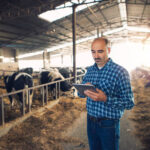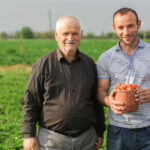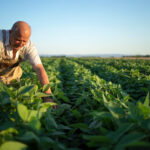Choosing the best packaging materials for farm produce is crucial for maintaining freshness, preventing spoilage, and appealing to consumers. As markets grow more competitive and demand for high-quality, safe, and sustainable food rises, farmers and distributors must pay close attention to the type of packaging they use. Proper packaging not only preserves the quality of fruits and vegetables but also helps reduce post-harvest losses and enhances the overall value of the product.
Packaging plays several roles in the post-harvest handling of farm produce. It protects items from physical damage during transport and storage, minimizes moisture loss, shields against contamination, and makes handling and display easier. The choice of material depends on the type of produce, the duration of storage, and the destination market.
Corrugated fiberboard boxes are among the most popular choices for transporting fresh produce. These boxes are lightweight, strong, and customizable. They provide good ventilation when designed with proper air holes and are often used for tomatoes, citrus fruits, and leafy greens. Many exporters and supermarket suppliers prefer them for their stackability and ease of branding.
Plastic crates are widely used for their durability and reusability. Unlike cardboard, they can withstand moisture and rough handling without collapsing. Vented plastic crates offer excellent airflow, making them ideal for perishable goods like berries, grapes, and mushrooms. In addition, plastic crates are easy to clean and sanitize, which is important for food safety compliance.
Net and mesh bags are suitable for packaging bulk produce such as onions, potatoes, and citrus fruits. They allow airflow, which helps prevent mold and moisture buildup. These bags are cost-effective and provide visibility of the product inside, which many buyers appreciate.
Polythene bags and films are commonly used for small quantities of produce, particularly in retail settings. They are often used to package herbs, leafy vegetables, and pre-cut fruits. While they offer convenience and protection from dehydration, they may not provide adequate ventilation and can trap moisture if not perforated, leading to faster spoilage.
Biodegradable and compostable packaging materials are gaining popularity, especially in markets where sustainability is a priority. These materials, made from plant fibers, paper, or bio-plastics, offer an eco-friendly alternative to conventional plastic. Though they may come at a higher cost, they appeal to environmentally conscious consumers and reduce environmental impact.
Wooden crates are traditional yet effective for hardy produce like melons, pumpkins, and root vegetables. They offer excellent protection against bruising and can carry heavy loads. However, they are bulkier and less cost-efficient for long-distance transport compared to modern alternatives.
The best packaging also considers labeling and traceability. Clear labeling of origin, variety, weight, and expiry dates builds consumer trust and complies with market regulations. In export markets, traceable packaging is especially important to meet food safety standards and facilitate smooth logistics.
Ultimately, the ideal packaging material for farm produce depends on the type of produce, market destination, budget, and environmental goals. Farmers and suppliers should prioritize materials that offer protection, ventilation, ease of handling, and compliance with market requirements. By investing in the right packaging, producers can reduce losses, enhance product appeal, and build a stronger brand presence in the market.







